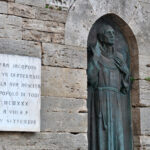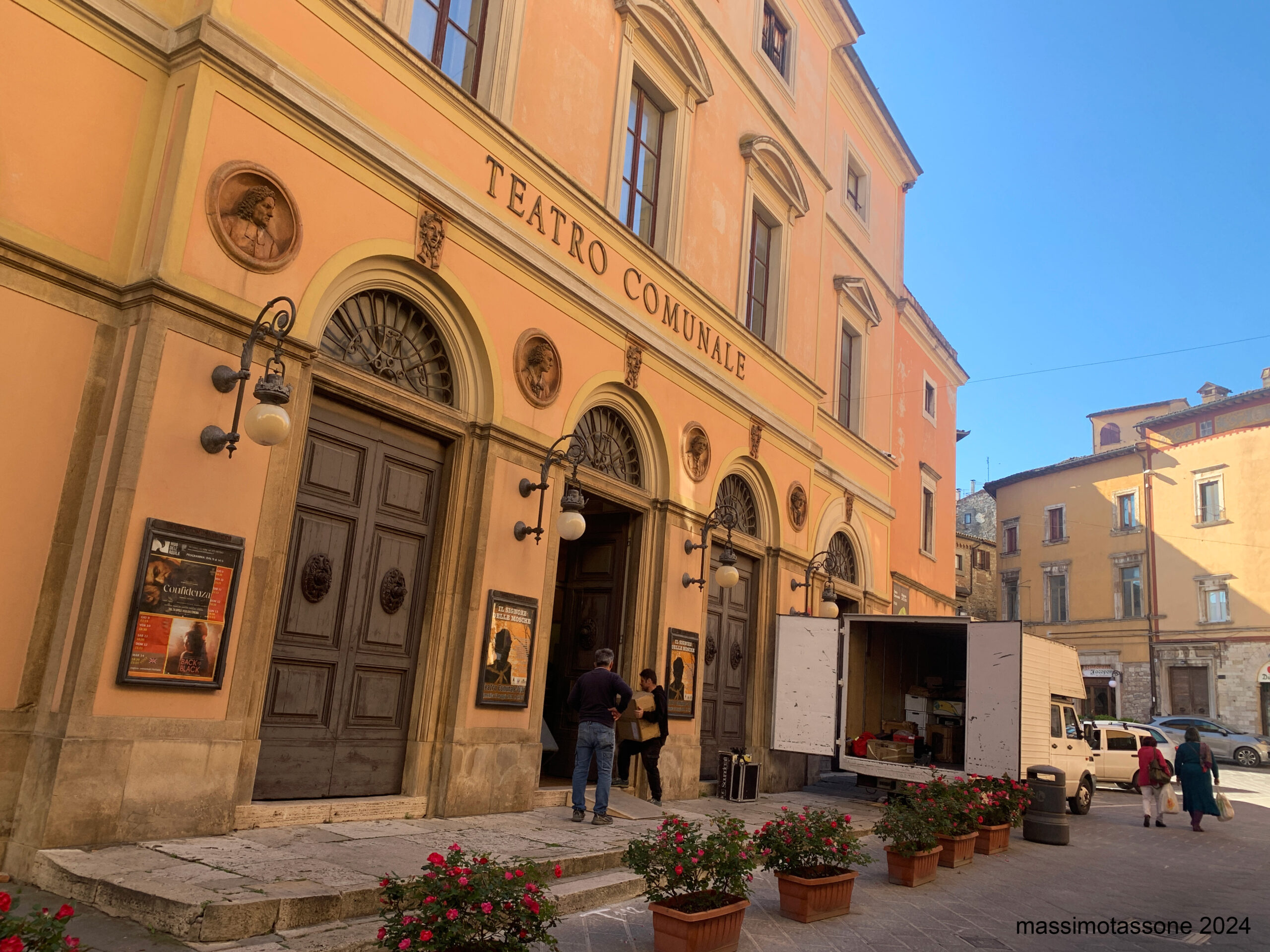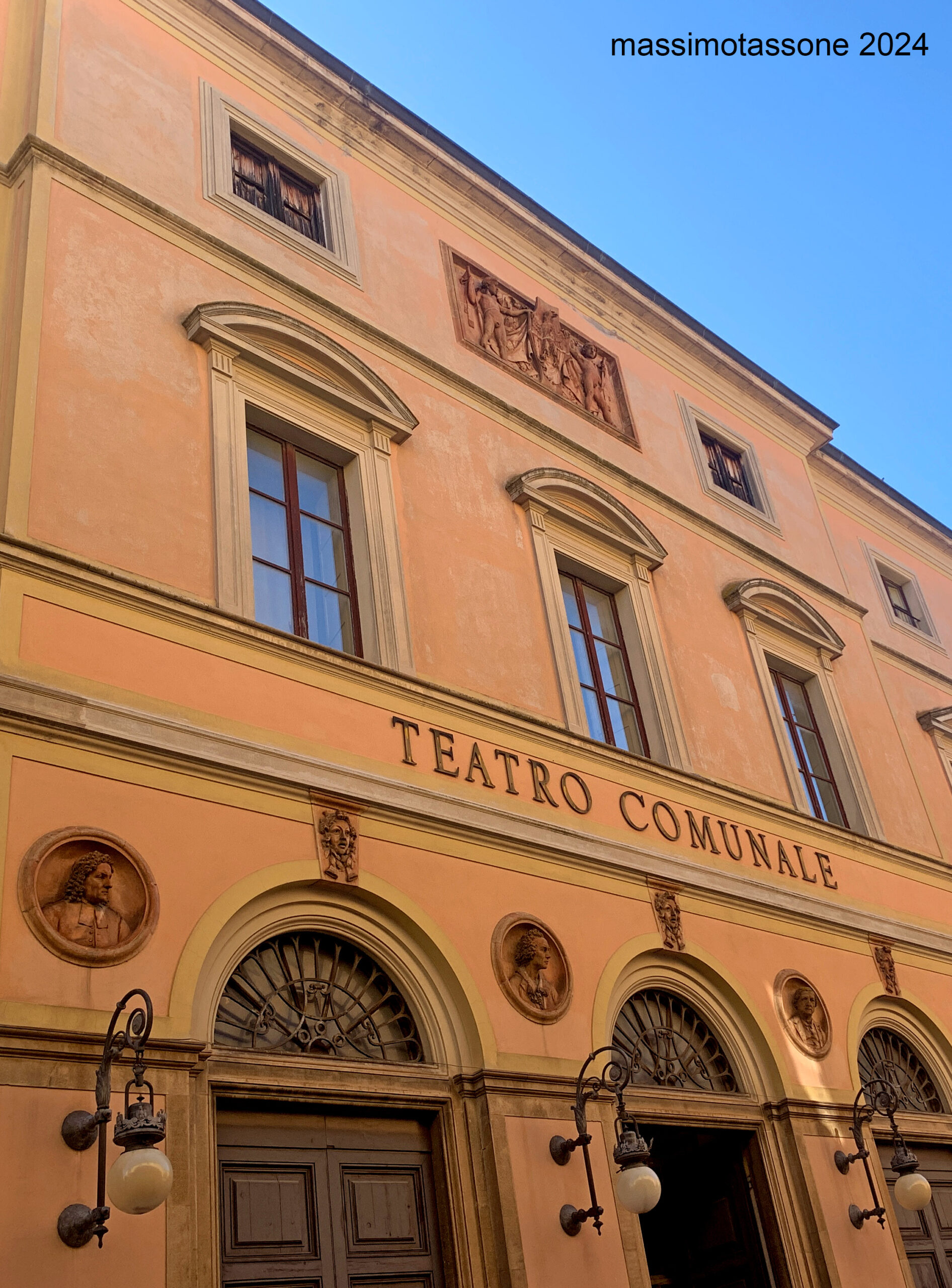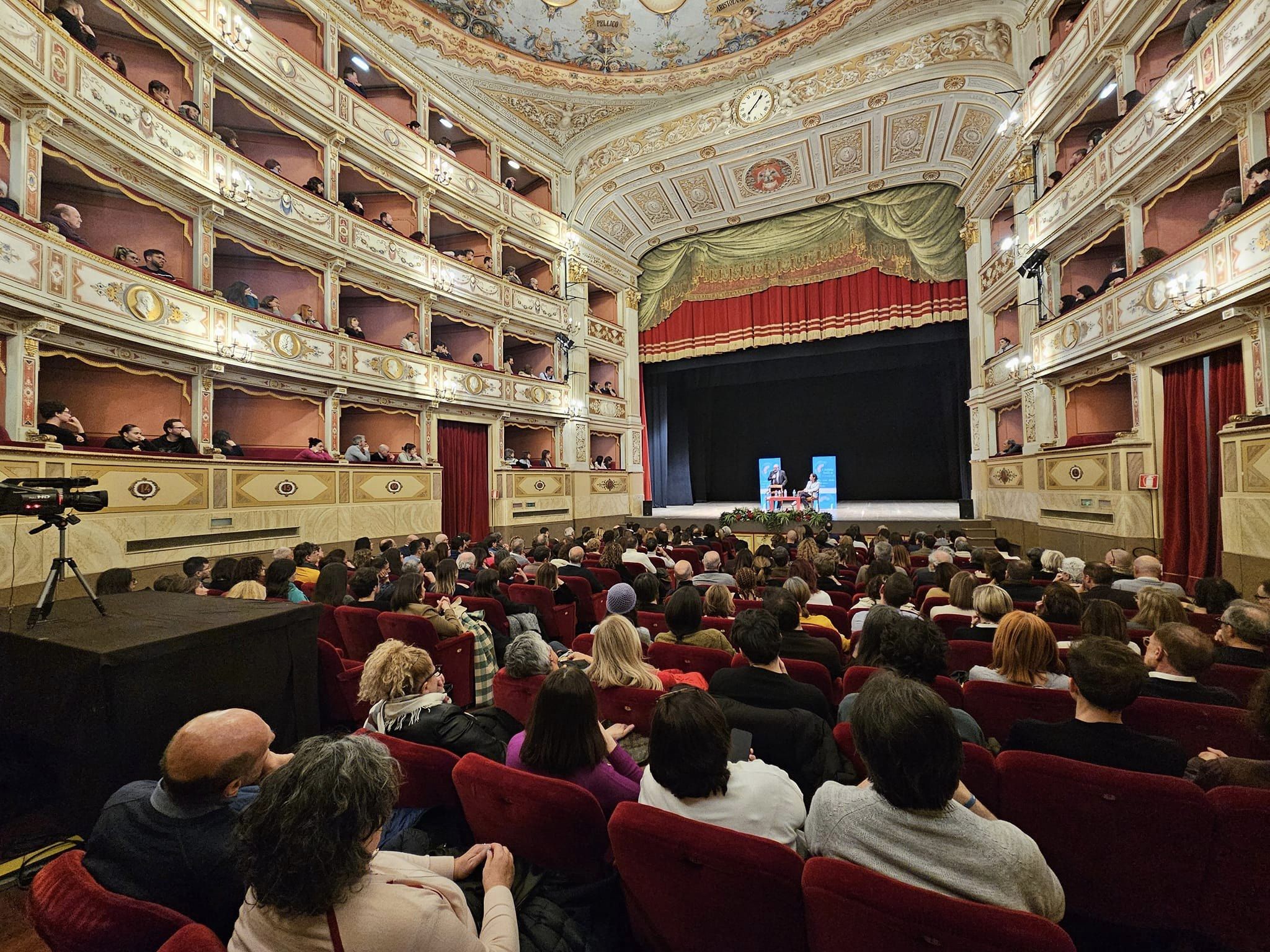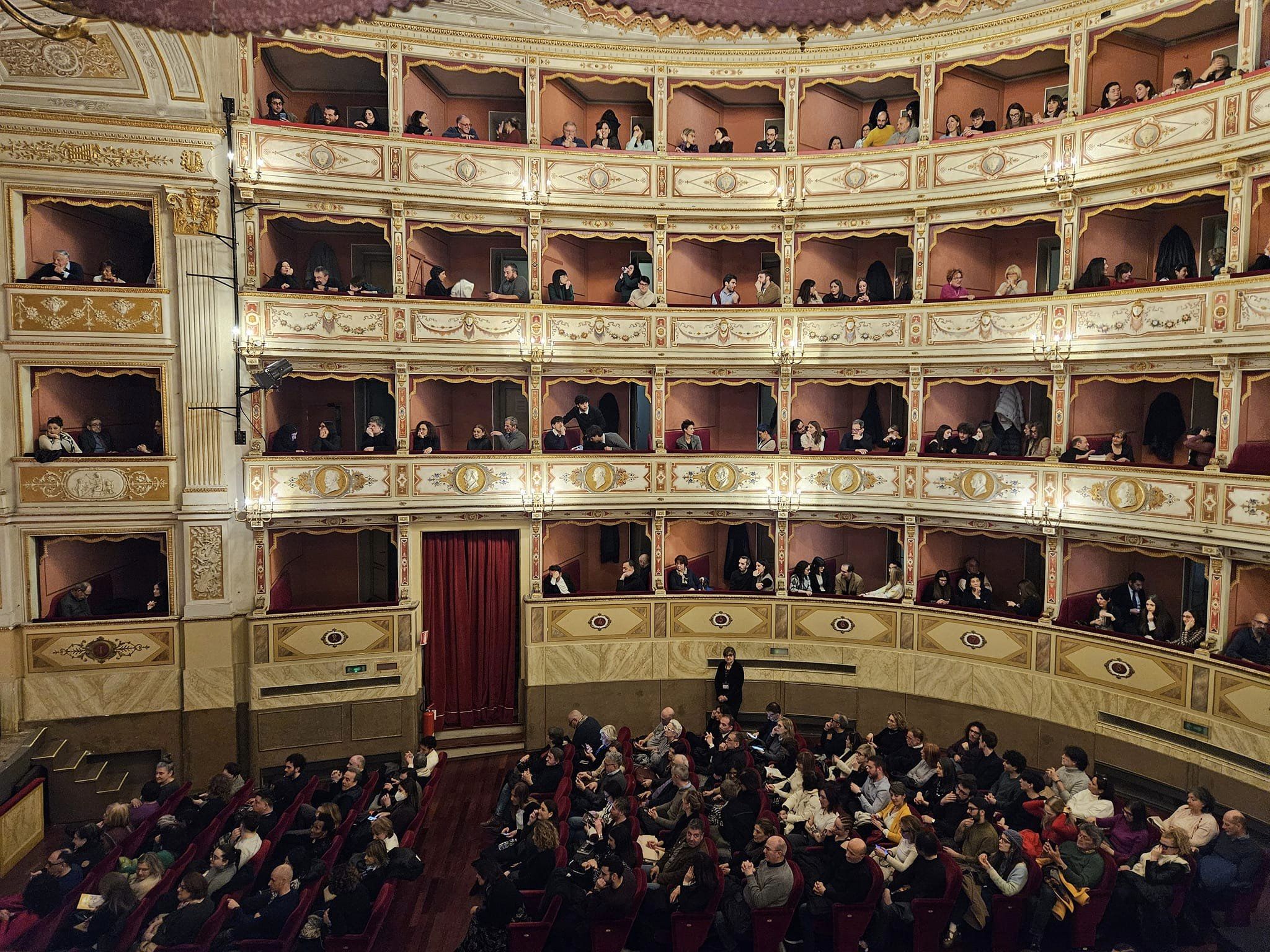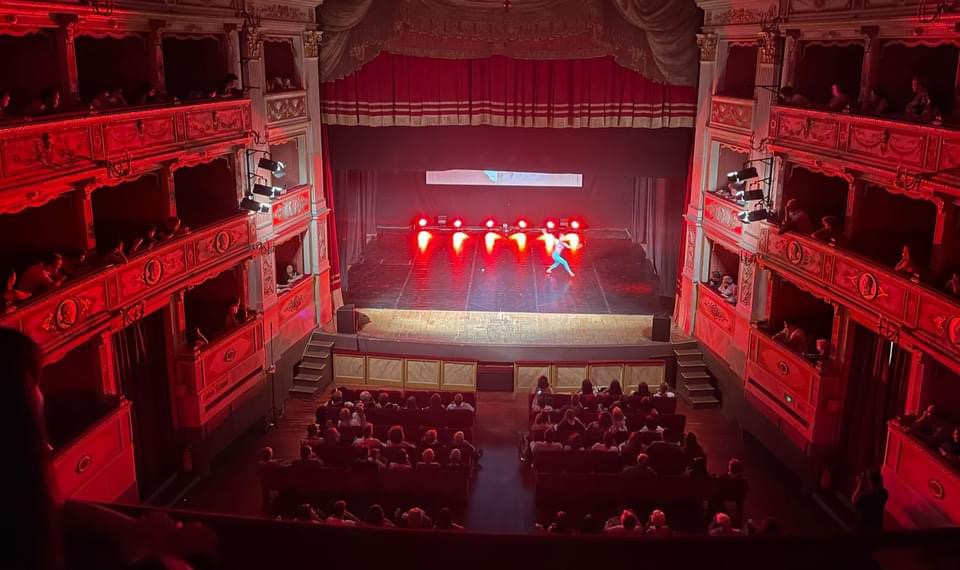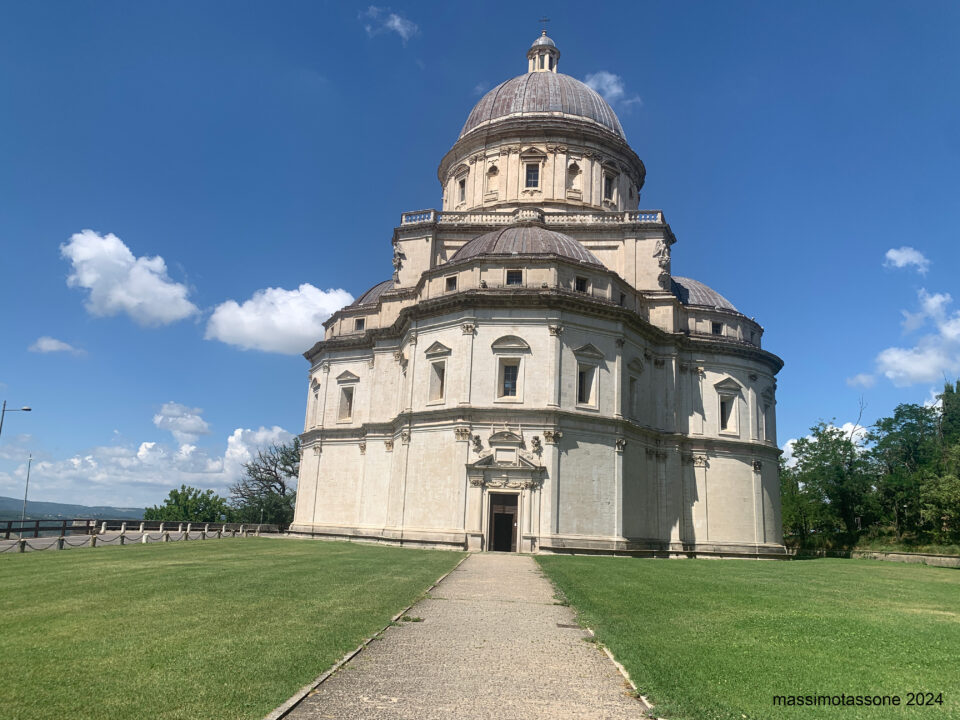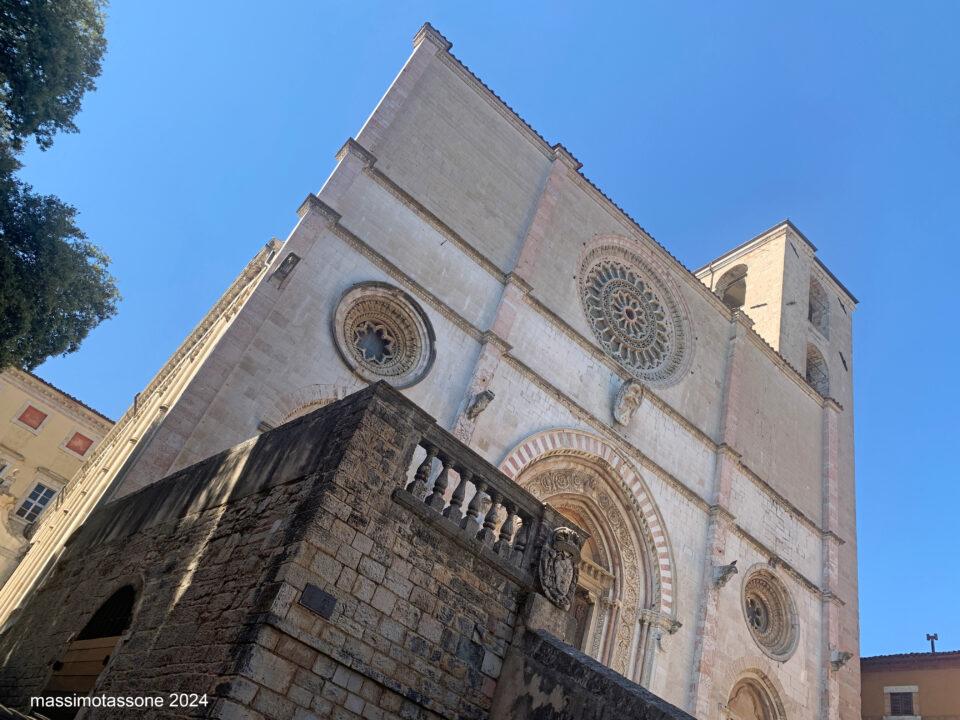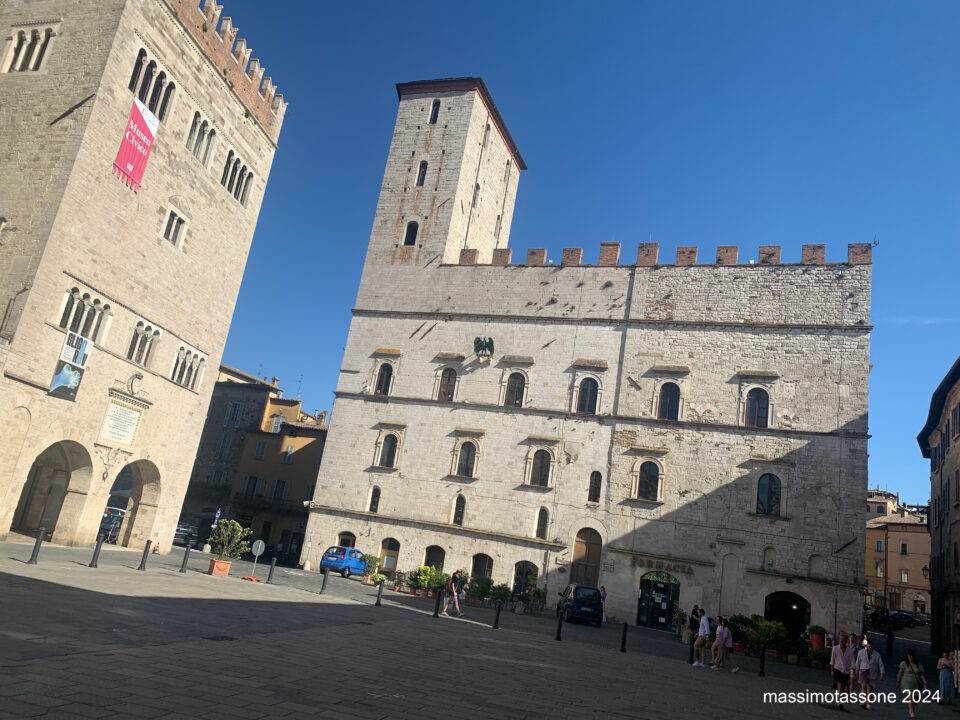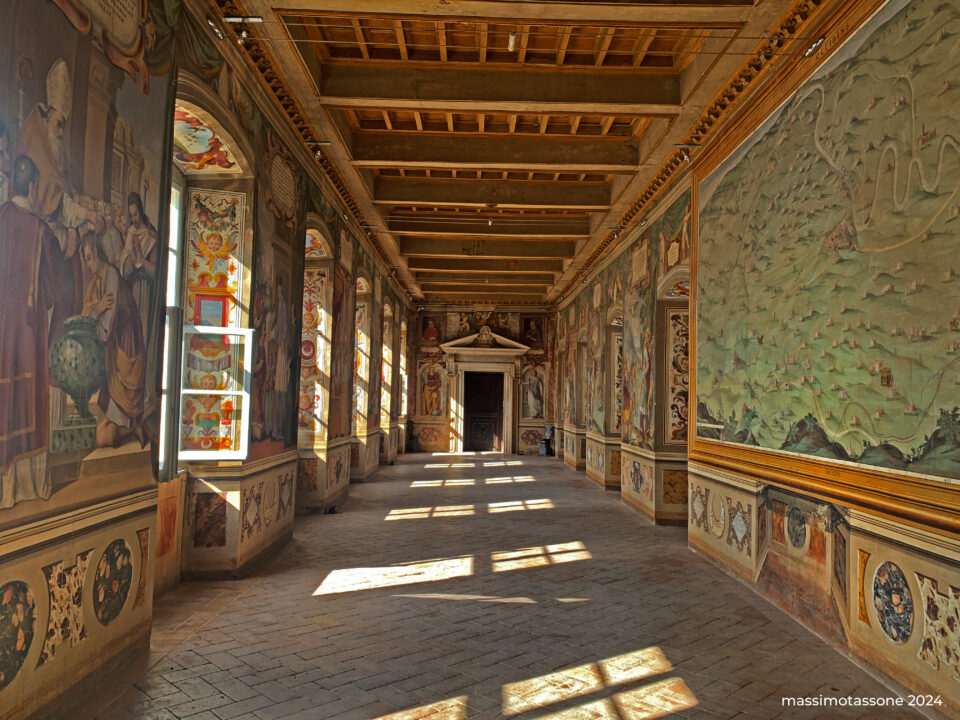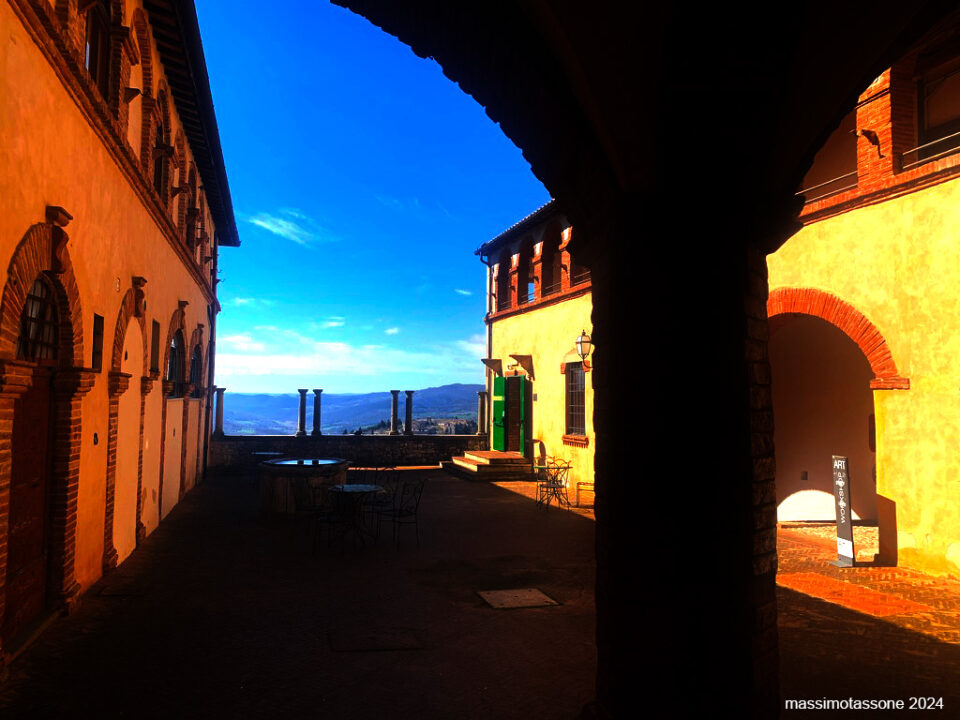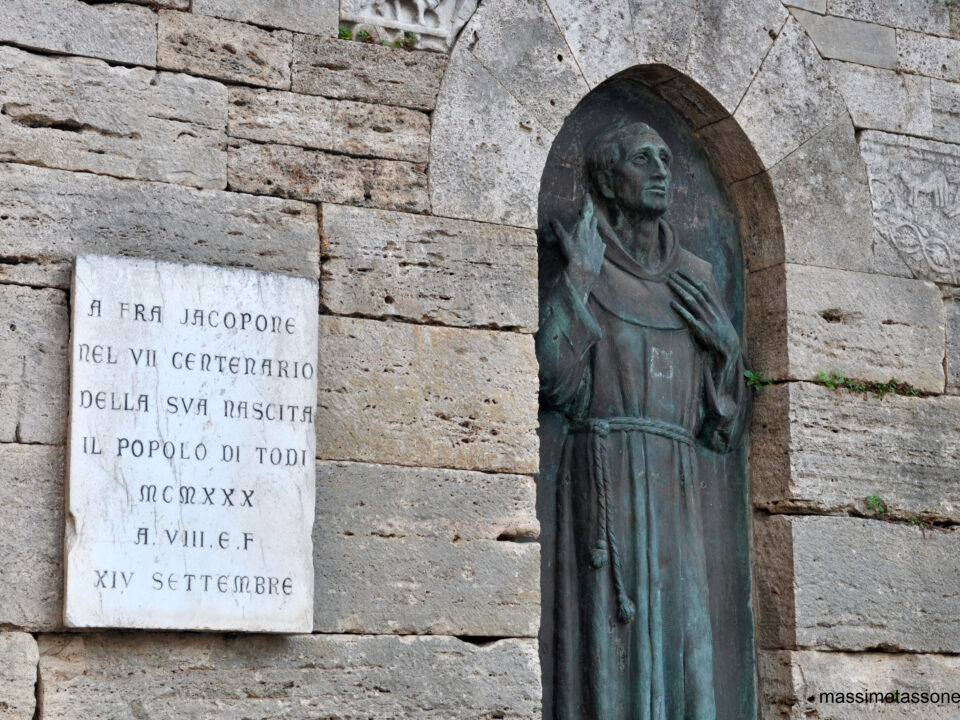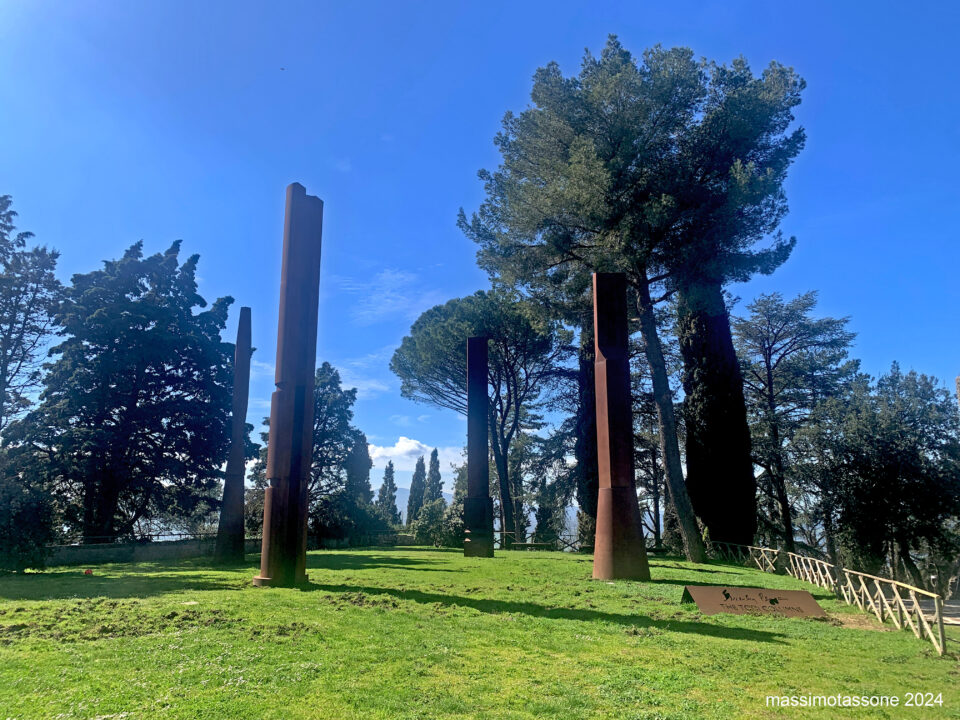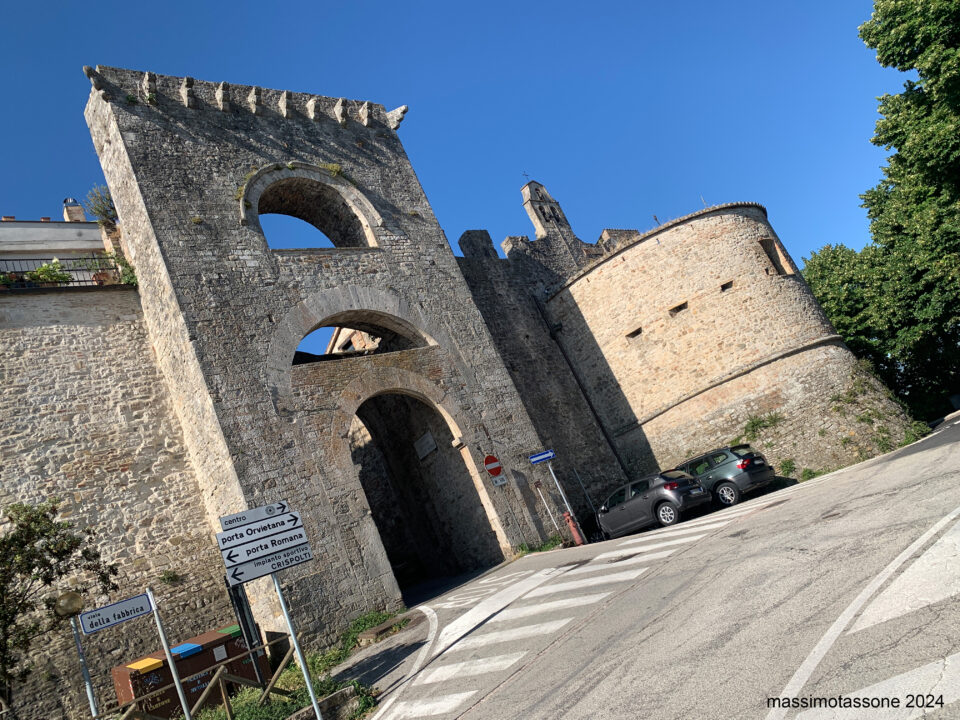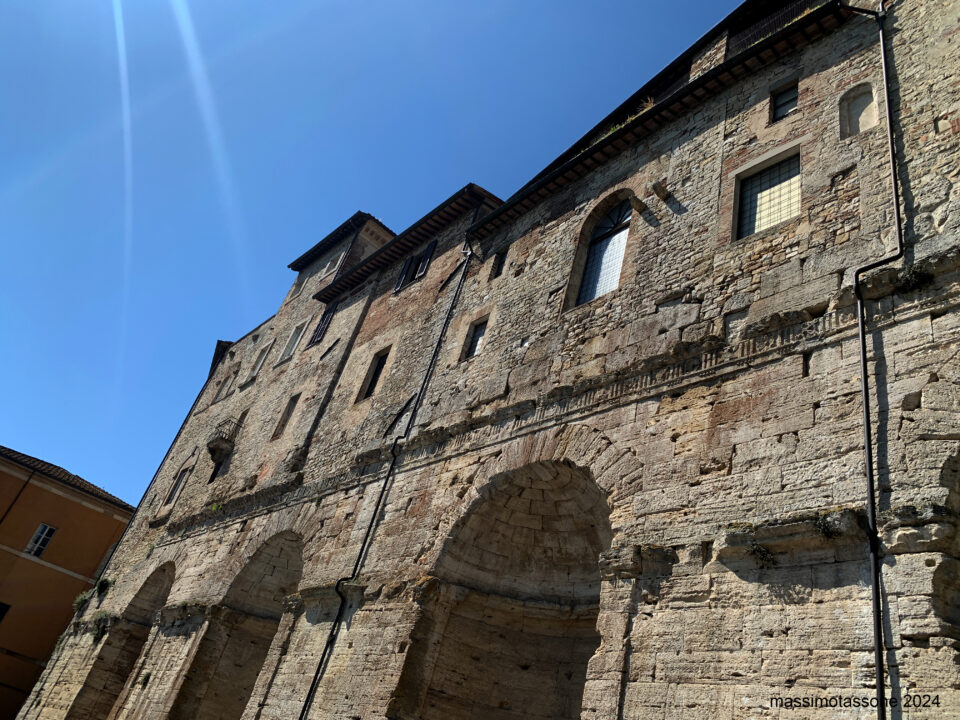The Teatro di Todi is located in the heart of the town, behind the Piazza Grande, highlighting the importance of the venue to the society of Todi in the 19th century. On September 3, 1868, the municipal council entrusted the project for the new theater to Carlo Gatteschi, an architect from Arezzo, who was also the author of the notable Teatro Signorelli in Cortona. The construction of the theater was completed in 1872, but its inauguration took place four years later with a performance of Verdi’s Un ballo in maschera.
he theater's hall is designed in the shape of a horseshoe and has four tiers of boxes, with a seating capacity of approximately 500 spectators. The stuccoes with the profiles of famous figures were created by the Angeletti and Biscarini studio from Perugia, while the gilding of the stuccoes was done by Giosuè and Daniele Lumaconi. The ceiling and box paintings were done by Matteo Tassi and Alfonso Morganti. The curtain was painted by Annibale Brugnoli (Perugia, 1843-1915), and it depicts the arrival of Ludovico Ariosto in Todi in 1531.
The theater is a quintessential example of 19th-century Italian architecture, with its large, oval-shaped auditorium, the elegance of the four-tiered boxes, and all the intricate decorations. After a period of decline, the theater and its associated spaces underwent restoration starting in 1982, and it was reopened to the public in 1992, with a capacity of 499 spectators.



